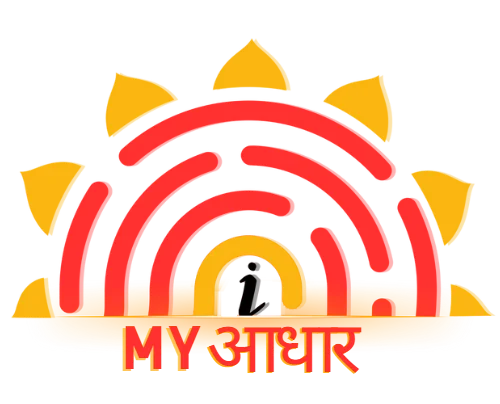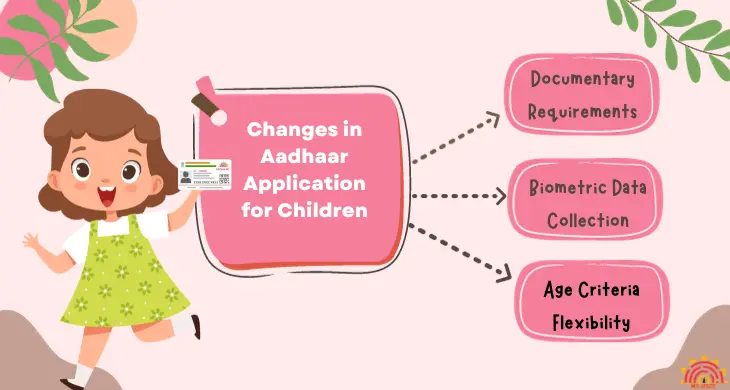Aadhaar, India’s unique identification system, plays a vital part in colorful aspects of life, including government services, subventions, and fiscal deals. While Aadhaar is obligatory for grown-ups, children were also needed to enroll for Aadhaar once they reached a certain age. To streamline this process and make it more child-friendly, the Unique Identification Authority of India( UIDAI) introduced changes in Aadhaar operation for children. In this blog, we will claw into these changes, the new conditions, and how parents can enroll their children in Aadhaar hassle-free.
Understanding the Changes:
The recent modifications in the Aadhaar application process for children have significantly improved the enrollment procedure, making it more convenient and efficient for both parents or guardians and children themselves. Let’s delve into these changes to gain a comprehensive understanding:
- Age Criteria Flexibility:
- Previously, children were required to enroll for Aadhaar at the age of 5.
- However, the new guidelines have relaxed this age limit, allowing children of any age to be enrolled for Aadhaar.
- This change eliminates the need to wait until a child reaches the age of 5, enabling parents to initiate the enrollment process earlier.
- Documentary Requirements:
- For children below the age of 5, no specific documents are required during the enrollment process.
- In the case of children aged 5 and above, proof of identity and proof of address documents of their parents or guardians are sufficient to establish their identity and residence.
- This simplification in document requirements reduces the administrative burden for parents and facilitates a smoother enrollment experience.
- Biometric Data Collection:
- One of the most significant changes pertains to biometric data collection.
- Preliminarily, biometric data like fingerprints and iris reviews were collected for children progressed 5 and over.
- Now, children below the age of 5 are pure from furnishing biometric data.
- Rather, their Aadhaar will be linked to their parent’s or guardian’s Aadhaar without the need for biometric data.
- For children progressed 5 and over, biometric data collection remains a part of the registration process.
These changes reflect the UIDAI’s commitment to simplifying the Aadhaar registration process, particularly for children. By offering further inflexibility and reducing document conditions, parents can enroll their children in Aadhaar with lesser ease, icing that they’ve access to essential government services and benefits from an early age. This shift in the Aadhaar operation process aligns with the government’s vision of furnishing every child in India with a unique identification number, easing their access to colorful services and openings.
Process for changes in Aadhaar application for children:
The application process for obtaining an Aadhaar card for children has undergone significant changes to simplify the procedure and make it more accessible. Here’s a step-by-step overview of the updated application process:
- Eligibility Criteria:
- Aadhaar enrollment is now open to children of any age.
- Parents or legal guardians can initiate the enrollment process for their children.
- Documentary Requirements:
- For children below the age of 5:
- No specific documents are required during the enrollment process.
- The child’s Aadhaar will be linked to their parent’s or guardian’s Aadhaar without the need for biometric data.
- For children aged 5 and above:
- Proof of identity and proof of address documents of their parents or guardians are sufficient to establish the child’s identity and residence.
- Biometric data, such as fingerprints and iris scans, may be collected as part of the enrollment process.
- For children below the age of 5:
- Enrollment Center Visit:
- Parents or legal guardians should visit the nearest Aadhaar enrollment center.
- They need to fill out the Aadhaar enrollment form for the child, providing accurate information.
- Biometric Data (For Children Aged 5 and Above):
- If the child is aged 5 or above, biometric data, including fingerprints and iris scans, may be collected.
- This step ensures the child’s unique identification.
- Photograph:
- A photograph of the child will be taken during the enrollment process.
- Verification:
- The information provided will be verified against the documents submitted.
- For children aged 5 and above, biometric data will also be verified.
- Acknowledgment Slip:
- After successful enrollment, an acknowledgment slip will be provided to the parent or guardian.
- This slip contains the child’s Aadhaar enrollment number, which can be used to track the status of the Aadhaar card.
- Aadhaar Card Generation:
- The Aadhaar card will be generated and sent to the registered address of the child.
- Alternatively, the e-Aadhaar card can be downloaded from the UIDAI website once the Aadhaar number is issued.
These changes in the application process aim to streamline the enrollment of children for Aadhaar and make it more accessible to parents and guardians. By simplifying documentation requirements and allowing enrollment from an early age, the government aims to ensure that every child in India can access various essential services and benefits seamlessly through Aadhaar.
Benefits of Aadhaar for Children:
Aadhaar, the unique identification number issued by the Unique Identification Authority of India (UIDAI), offers several benefits for children:
- Access to Government Services: Aadhaar serves as proof of identity and residence, enabling children to access various government services and schemes. This includes scholarships, healthcare services, and educational programs.
- Financial Inclusion: Aadhaar can be linked to a child’s bank account, facilitating financial inclusion. It allows parents or guardians to open bank accounts in the child’s name and manage financial transactions on their behalf.
- Educational Support: Many educational institutions and scholarship programs require Aadhaar for enrollment and disbursement of scholarships. Aadhaar ensures that children have access to educational opportunities and financial support.
- Healthcare Services: Aadhaar can be linked to health insurance schemes, making it easier for children to receive medical benefits and treatment. It also helps healthcare providers verify the identity of patients accurately.
- Child Welfare Programs: Several child welfare programs and initiatives are linked to Aadhaar to ensure targeted and efficient delivery of benefits. This includes programs related to nutrition, immunization, and child development.
- Digital Services: As children grow, Aadhaar can be used for colorful digital services, similar ase-KYC( Know Your client) processes, mobile number verification, and online deals.
- Documents: Aadhaar can be used as evidence of identity and address when applying for trip documents like passports. This simplifies the process of carrying trip documents for children.
- Government subventions: numerous government subventions, similar to LPG subventions, are linked to Aadhaar. Children in households benefit from these subsidies when their Aadhaar details are linked to the family’s accounts.
- Scholarships: Aadhaar is often a mandatory requirement for applying for scholarships at different educational levels. It ensures that children have access to financial assistance for their studies.
Frequently Asked Questions:
Ques: How to Update Your Child’s Aadhaar Card?
Ans: To update your child’s Aadhaar card information, follow these steps:
- Visit the nearest Aadhaar center for enrollment.
- Bring the child’s birth certificate along with the parent or guardian’s Aadhaar card.
- Children up to the age of five won’t need to provide biometric data.
- The child’s Aadhaar will be linked to the parent’s or guardian’s Aadhaar.
Ques: At what age should a child update their Aadhaar card?
Ans: Aadhaar card updates for children are typically chargeable at Rs 50. However, UIDAI now offers mandatory updates for free when a child reaches the age of 5 and 15 years.
Ques: How can I apply for an Aadhar card for a child above 5 years online?
Ans: To apply for an Aadhaar card for a child above 5 years online, follow these steps:
- Go to the website of the Unique Identification Authority of India (UIDAI).
- Go to the Aadhaar card registration link.
- Obtain the required form.
- Enter basic details such as the child’s name, parent’s phone number, and email ID.
- Ensure that you provide a valid and active phone number and email ID during the process.
Ques: Do we need to update Aadhar for kids?
Ans: Yes, for children under 5 years of age, their Aadhaar is linked to one of their parents or guardians. However, they need to submit their biometric information (Photograph, ten Fingerprints, and two Irises) once they attain the age of 5 years.
Ques: What documents are required for a new Aadhaar card for a child?
Ans: Documents needed for minors’ Aadhaar cards are as follows:
- For children below 5 years of age: Birth Certificate and Parents’ Aadhaar Card.
- For children aged 5 to 15 years: Birth certificate, school ID, Bonafide certificate, Parents’ Aadhaar, and Identity certificate issued by the Tehsildar.
Conclusion:
The changes in Aadhaar operation for children have simplified the process, making it more accessible for parents and guardians. Aadhaar is not only a form of identity but also a key to unleashing numerous benefits and services for children in India. By enrolling your child in Aadhaar, you are icing their access to a wide range of openings and government benefits, setting them on a path to a brighter future.

